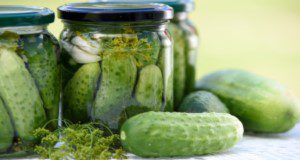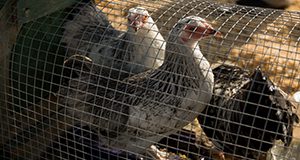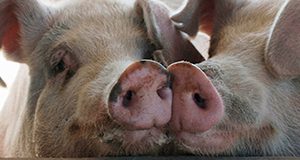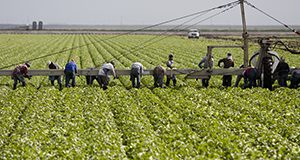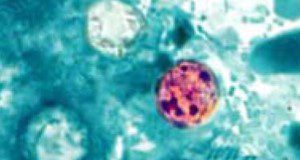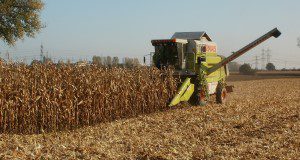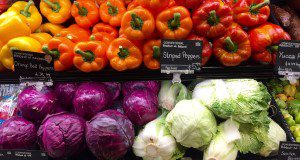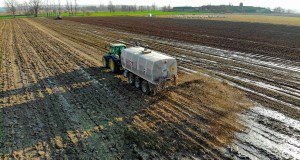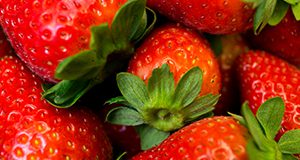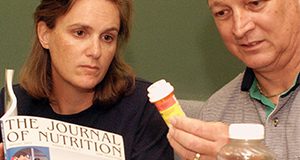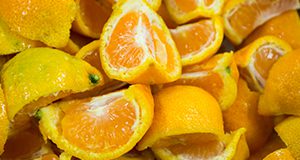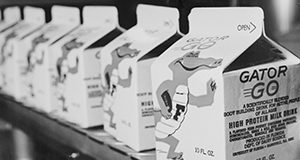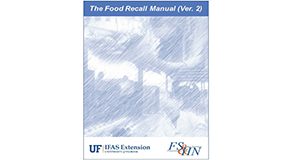Food acidity is an important parameter in food product development. Most people know that food acidity influences flavor, but more importantly, food acidity can affect the ability of microorganisms to grow in food. Food acidity, or the amount of acid that is present in the food, is used to classify a food product, and that classification determines the regulatory requirements for the specific food product. This new 6-page publication of the UF/IFAS Food Science and Human Nutrition Department describes how to measure food acidity and how food is classified based on its acidity. Written by Soohyoun Ahn, Jayna Goldstein, George Baker, and Matthew Krug.
https://edis.ifas.ufl.edu/fs325
Category: Food Safety
Raising Backyard Chickens for Eggs
Raising backyard chickens is an increasingly popular way to explore self-sufficiency, connect with how our food is produced, and gain experience for future dabbling in food production. This 13-page publication is designed primarily for those considering raising backyard chickens for eggs for personal consumption. Written by Mary E. Henry, Jessica M. Ryals, Alicia Halbritter, and Derek L. Barber, and published by the UF/IFAS Department of Animal Sciences, revised November 2019.
http://edis.ifas.ufl.edu/an239
Common Hazards to Consider during Manufacturing of Feeds for Swine
This 8-page document discusses common biological, chemical, and physical hazards that may need preventive measures during the manufacture of swine feeds. Written by Taylor Langford, Morgan McKinney, Chad Carr, and Jason M. Scheffler, and published by the UF/IFAS Department of Animal Sciences, September 2019.
http://edis.ifas.ufl.edu/an357
Food Safety on the Farm: Good Agricultural Practices and Good Handling Practices: an Overview
Good Agricultural Practices (GAPs) and Good Handling Practices (GHPs) encompass the general procedures that growers, packers and processors of fresh fruits and vegetables should follow to ensure the food safety of their product. GAPs usually deal with preharvest practices (i.e., in the field), while GHPs cover postharvest practices, including packing and shipping. We will use the term GAPs in this fact sheet to generally cover pre- and postharvest practices associated with the safe handling of produce, both fresh and minimally processed. This five-page introduction to the Food Safety on the Farm series provides an overview of GAPs and GHPs, summarizing major principles and recommendations of later documents in the series. Written by Jaysankar De, Christopher R. Pabst, Jessica Lepper, Renée Goodrich Schneider, and Keith R. Schneider and published by the UF/IFAS Food Science and Human Nutrition Department.
http://edis.ifas.ufl.edu/fs135
Protecting Perishable Foods During Transport by Truck and Rail
The importance of protecting perishable foods from loss of quality during transport has long been recognized. Increased recognition of the importance of the transport link in the food distribution cold chain in securing the safety of perishable foods has more recently become as well recognized.
This updated edition reflects the dynamic changes and innovations in the handling and transportation of perishable foods. Some of these include improved insulation and air movement, microprocessors for more efficient refrigeration, expert systems to control the transport environment and conserve fuel energy, and the use of telematics to monitor and control the performance of refrigerated vehicles during transit. This edition includes descriptions and recommendations for food transported over the road and by rail in marine containers, as well as in railcars. This 214-page revision was written by J. K. Brecht, Steven A. Sargent, Patrick E. Brecht, Jorge Saenz, and Leonard Rodowick and published by the UF/IFAS Horticultural Sciences Department in cooperation with the USDA AMS Transportation Services Division.
http://edis.ifas.ufl.edu/hs1328
Preventing Foodborne Illness: Cyclosporiasis
Cyclosporiasis is an intestinal illness caused by the microscopic parasite Cyclospora cayetanensis. People can become infected with Cyclospora by consuming food or water contaminated with the parasite. People living or traveling in countries where cyclosporiasis is endemic may be at increased risk for infection. This 6-page publication is part of the Preventing Foodborne Illness series and describes symptoms and strategies for cyclosporiasis prevention for farmers, restaurants and retailers, and consumers. This major revision was written by Christopher R. Pabst, Jaysankar De, Renée Goodrich-Schneider, and Keith R. Schneider and published by the UF/IFAS Food Science and Human Nutrition Department.
http://edis.ifas.ufl.edu/fs130
Food Safety on the Farm: Good Agricultural Practices and Good Handling Practices: Transportation
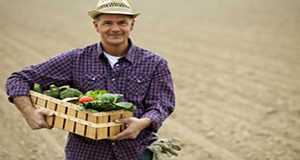
Good agricultural practices (GAPs) and good handling practices (GHPs) encompass the general procedures growers, packers, and processors of fresh fruits and vegetables should follow to ensure the safety of their product. GAPs usually address preharvest practices (i.e., in the field), while GHPs cover postharvest practices, including packing and shipping. This 3-page fact sheet covers the GAPs of transporting crops. This major revision is a part of the Food Safety on the Farm series and was written by Christopher R. Pabst, Jaysankar De, Alina Balaguero, Jessica Lepper, Renée Goodrich-Schneider, and Keith R. Schneider and published by the UF/IFAS Food Science and Human Nutrition Department.
http://edis.ifas.ufl.edu/fs151
Food Safety on the Farm: Good Agricultural Practices and Good Handling Practices: Field Sanitation
Good Agricultural Practices (GAPs) and Good Handling Practices (GHPs) encompass the general procedures that growers, packers, and processors of fresh fruits and vegetables should follow to ensure the safety of their product. GAPs usually deal with preharvest practices (i.e., in the field), while GHPs cover postharvest practices, including packing and shipping. This 5-page fact sheet covers harvest practices associated with sanitation in the field, including basic principles for microbial food safety and control of potential hazards. This major revision is a part of the Food Safety on the Farm series and was written by Jessica Lepper, Jaysankar De, Christopher Pabst, Renée Goodrich-Schneider, and Keith Schneider and published by the UF/IFAS Food Science and Human Nutrition Department.
http://edis.ifas.ufl.edu/fs160
Food Safety on the Farm: Good Agricultural Practices and Good Handling Practices: Traceback
Good Agricultural Practices (GAP) and Good Handling Practices (GHP) are voluntary audits that verify fruits and vegetables are produced, packed, handled, and stored as safely as possible to keep the risks of microbial food safety hazards at the minimal level. Good Agricultural Practices usually deal with preharvest practices (i.e., in the field), while GHPs cover postharvest practices, including packing and shipping. This 3-page fact sheet in the Food Safety on the Farm series covers GAPs and GHPs relating to traceback, or the ability to track food items, such as fresh produce, back to their source. This major revision was written by Jaysankar De, Christopher R. Pabst, Alexandra S. Chang, Renée M. Goodrich-Schneider, and Keith R. Schneider and published by the UF/IFAS Food Science and Human Nutrition Department.
http://edis.ifas.ufl.edu/fs152
Food Safety on the Farm: Good Agricultural Practices and Good Handling Practices: Manure and Municipal Biosolids
Good Agricultural Practices (GAPs) and Good Handling Practices (GHPs) encompass the general procedures growers, packers, and processors of fresh fruits and vegetables should follow to ensure the safety of their product. GAPs usually deal with pre-harvest practices (i.e., in the field), while GHPs tend to cover post-harvest practices, including packing and shipping. This 5-page entry in the Food Safety on the Farm series focuses on Good Agricultural Practices, including pathogen reduction and handling and application, to control potential hazards when working with manure and biosolids. This major revision was written by Jaysankar De, Christopher R. Pabst, Jessica Lepper, Renée M. Goodrich-Schneider, and Keith R. Schneider and published by the UF/IFAS Food Science and Human Nutrition Department.
http://edis.ifas.ufl.edu/fs150
Facility Registration and Initial Regulatory Compliance Activities for Acidified Food and Low-Acid Canned Food Processors in Florida
Food businesses are subject to a wide range of regulatory requirements. Food entrepreneurs who want to produce and sell acidified foods or low-acid canned foods must abide by specific FDA regulations. This new 3-page document intends to clarify the initial steps food entrepreneurs must implement to comply with these regulations. This factsheet is one in a Food Entrepreneurship in Florida series, which assists beginning and established food entrepreneurs by providing them information on topics highly relevant to starting and running a food business: regulations, safety, labeling, processing, and marketing. Written by Matthew Krug and Soohyoun Ahn, and published by the UF/IFAS Food Science and Human Nutrition Department, February 2019.
http://edis.ifas.ufl.edu/fs318
Feeding Your Baby
Feeding your baby is one of the first things you do as a parent. It is also one of the ways that you develop a relationship with this new family member. When feeding goes well, everyone in the family is happier. This 3-page publication can help you develop a close feeding relationship with your baby. The skills you learn will also help you and your child avoid conflicts over food during the toddler and preschool years. Written by Linda B. Bobroff and Nicole Owens Duffy, and published by the UF/IFAS Department of Family, Youth and Community Sciences, revised March 2019.
http://edis.ifas.ufl.edu/he964
La Ley de Modernizacion para la Seguridad Alimentaria (FSMA): Controles Preventivos para los Alimentos de Animales
La Ley de Modernización de la Seguridad Alimentaria (FSMA) se convirtió en ley en enero de 2011 y se considera la reforma más amplia de las normas de seguridad alimentaria en 70 años. Primero, se establecieron las regulaciones sobre alimentos para el consumo humano luego con la contribución de la industria, la academia, y los consumidores y otras agencias, se modificaron para adaptarse mejor a la producción de alimentos para animales. En Florida, estas nuevas regulaciones se aplican a las instalaciones que fabrican, procesan, empacan o almacenan alimentos o ingredientes para animales. El objetivo principal de estas regulaciones es garantizar alimentos seguros para los animales, las personas que manejan el alimento y las personas que consumen productos derivados de animales. This 4-page document is the Spanish version of The Food Safety Modernization Act (FSMA) Preventive Controls for Animal Food. Written by Francisco Rivera, Chad Carr, and Jason M. Scheffler, and published by the UF/IFAS Department of Animal Sciences, February 2019.
http://edis.ifas.ufl.edu/an352
Alimentacion saludable: Guia de almacenamiento de alimentos
Si usted no compra alimentos a menudo, probablemente debería comprar alimentos que duren hasta su próxima visita a la tienda. Para ayudarle a aprender que tanto comprar, aquí tenemos algunas guías para almacenar alimentos perecederos. This 2-page fact sheet is a major revision that provides food storage tips. Written by Jennifer Hillan and Linda B. Bobroff, and published by the UF/IFAS Department of Family, Youth and Community Sciences, revised July 2018.
https://edis.ifas.ufl.edu/fy700
Packaging and Storage of Hops (Humulus lupulus)
Hops (Humulus lupulus) are an essential ingredient to the production of beer. This 3-page document describes how to properly store and package hops. Written by Brian Pearson and Sean Campbell and published by the UF/IFAS Environmental Horticulture Department, June 2018.
http://edis.ifas.ufl.edu/ep561
Vida Saludable: Use sus medicinas de una manera segura
Las medicinas nos pueden hacer sentir mejor y mejorar nuestra salud, pero si no las usamos correctamente nos pueden hacer sentir peor o hasta causarnos problemas de salud mayores. This is the Spanish-language version of FCS8594/FY667, Healthy Living: Use Your Medicines Safely! This 5-page document provides tips to help you use your medicines safely. Written by Paulina Wittkowsky, Linda B. Bobroff, and Emily Minton, and published by the UF/IFAS Department of Family, Youth and Community Sciences, revised February 2018.
http://edis.ifas.ufl.edu/fy668
Nutrition for Health and Fitness: Fiber in Your Diet
Whether you call it dietary fiber, fiber, or roughage, eating a diet rich in this food component is good for your health. This 8-page fact sheet provides tips on how to include foods with fiber in your diet. Written by Linda B. Bobroff, and published by the UF/IFAS Department of Family, Youth and Community Sciences, revised March 2018.
http://edis.ifas.ufl.edu/he697
Vida Saludable: Los alimentos pueden afectar sus medicamentos
Algunos alimentos pueden afectar la manera en que los medicamentos con prescripción o sin prescripción médica funcionan, ya sea retardando, disminuyendo o aumentando la cantidad del medicamento que el cuerpo absorbe. Esto puede ocasionar efectos secundarios peligrosos y no deseados. Written by Paulina Wittkowsky and Linda B. Bobroff, and published by the UF/IFAS Department of Family, Youth and Community Sciences, revised January 2018.
http://edis.ifas.ufl.edu/fy677
The Food Recall Manual (Version 2)
Any business involved in the manufacture, processing, packing, holding, or delivery of food to humans needs to understand and address food recalls. When safety concerns arise with food you are manufacturing, you have a legal and ethical responsibility to mitigate any damage to the health and wellbeing of consumers. This manual details what you need to know to effectively understand and handle a food recall. Written by Keith R. Schneider, Renee Goodrich-Schneider, Douglas A. Archer, Michelle D. Danyluk, George L. Baker, and Chris Thomas and published by the UF/IFAS Department of Food Science and Human Nutrition, February 2018.
http://edis.ifas.ufl.edu/fs108
Seguridad Alimentaria: Juegatela seguro con los huevos
Los huevos frescos pueden contener bacterias que podrían causar una enfermedad llamada salmonelosis. Esta enfermedad causada por alimentos provoca vómito y diarrea. Esta puede ser severa y hasta podría ser fatal para los adultos de mayor edad. Reduzca el riesgo de contraer esta enfermedad al seguir estas pautas. Written by Linda B. Bobroff and Jennifer Hillan, and published by the UF/IFAS Department of Family, Youth and Community Sciences, revised February 2018.
http://edis.ifas.ufl.edu/fy194
